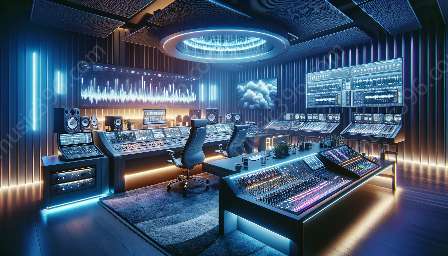Music production has evolved significantly with the advent of digital audio technology, revolutionizing the way music is created, recorded, and distributed. In this comprehensive guide, we will delve into the inner workings of digital audio and its role in music production, exploring various techniques, methods, and analysis of music production.
Understanding Digital Audio
At its core, digital audio is the representation of sound in a binary format, where analog audio signals are converted into digital data through a process known as analog-to-digital conversion. This digital representation allows for precise manipulation, storage, and reproduction of audio content, offering unparalleled flexibility and control in music production.
Quantization and Sampling: Digitizing audio involves two crucial processes: quantization and sampling. Quantization involves approximating the amplitude of audio signals to discrete levels, while sampling captures and records these discrete levels at regular intervals, resulting in a digital representation of the original analog sound.
Digital Audio Workstations (DAWs): DAWs are software applications that serve as the central hub for music production, providing tools for recording, editing, mixing, and mastering audio tracks. These powerful platforms enable musicians and producers to manipulate digital audio with precision, utilizing a wide range of plugins and virtual instruments to shape their sonic creations.
Music Production Techniques
When it comes to music production, digital audio opens up a plethora of techniques and possibilities, allowing for creative experimentation and innovation. Let's explore some key techniques that leverage digital audio:
- Multitrack Recording: Digital audio allows for seamless multitrack recording, enabling musicians to capture individual audio elements separately and combine them into a cohesive mix. This flexibility empowers producers to refine each component of a song with precision.
- Virtual Instruments and MIDI: With digital audio, virtual instruments and MIDI (Musical Instrument Digital Interface) play a pivotal role in music production. Virtual instruments emulate the sounds of traditional instruments, while MIDI enables precise manipulation of musical notes and parameters, enhancing the creative process.
- Signal Processing and Effects: Digital audio enables extensive signal processing and application of effects, such as equalization, compression, reverb, and modulation. These tools allow producers to shape the tonal characteristics and spatial properties of audio, enhancing the sonic quality of the music.
Advancements in Music Analysis
Moreover, digital audio has revolutionized music analysis by providing unprecedented access to detailed sonic data and facilitating in-depth scrutiny of musical compositions. With the aid of digital audio technology, music analysts can explore intricate details within a piece of music, uncovering hidden nuances and crafting insightful interpretations.
Waveform Analysis: Digital audio analysis involves examining audio waveforms to understand the amplitude, frequency, and structure of sound. This detailed analysis enables music scholars and enthusiasts to dissect music at a granular level, uncovering stylistic elements and compositional techniques.
Spectral Analysis: Spectral analysis delves into the frequency content of audio signals, offering valuable insights into the timbral characteristics and harmonic content of music. By dissecting the spectral makeup of digital audio, analysts can discern unique timbral signatures and spectral nuances present in musical compositions.
Pattern Recognition and Comparative Analysis: Digital audio technologies facilitate pattern recognition and comparative analysis, allowing analysts to identify recurring motifs, melodic patterns, and structural elements within music. This analytical approach supports in-depth comparisons across musical works, shedding light on stylistic influences and compositional innovations.
Conclusion
From the intricacies of digital audio technology to the diverse music production techniques and the advancements in music analysis, the impact of digital audio in the realm of music is profound. As technology continues to evolve, digital audio will undoubtedly play a pivotal role in shaping the future of music production and analysis, laying the groundwork for new creative possibilities and scholarly explorations.

































